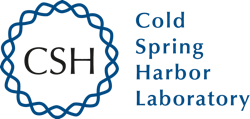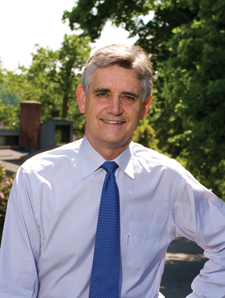Related Research Articles

James Dewey Watson is an American molecular biologist, geneticist, and zoologist. In 1953, he co-authored with Francis Crick the academic paper proposing the double helix structure of the DNA molecule. Watson, Crick and Maurice Wilkins were awarded the 1962 Nobel Prize in Physiology or Medicine "for their discoveries concerning the molecular structure of nucleic acids and its significance for information transfer in living material".

Max Ferdinand Perutz was an Austrian-born British molecular biologist, who shared the 1962 Nobel Prize for Chemistry with John Kendrew, for their studies of the structures of haemoglobin and myoglobin. He went on to win the Royal Medal of the Royal Society in 1971 and the Copley Medal in 1979. At Cambridge he founded and chaired (1962–79) The MRC Laboratory of Molecular Biology (LMB), fourteen of whose scientists have won Nobel Prizes.

The École polytechnique fédérale de Lausanne is a public research university in Lausanne, Switzerland. Established in 1969, EPFL has placed itself as a public research university specializing in engineering and natural sciences.

Cold Spring Harbor is a hamlet and census-designated place (CDP) in the Town of Huntington, in Suffolk County, on the North Shore of Long Island in New York. As of the 2010 United States census, the CDP population was 5,070.

Max Ludwig Henning Delbrück was a German–American biophysicist who participated in launching the molecular biology research program in the late 1930s. He stimulated physical scientists' interest into biology, especially as to basic research to physically explain genes, mysterious at the time. Formed in 1945 and led by Delbrück along with Salvador Luria and Alfred Hershey, the Phage Group made substantial headway unraveling important aspects of genetics. The three shared the 1969 Nobel Prize in Physiology or Medicine "for their discoveries concerning the replication mechanism and the genetic structure of viruses". He was the first physicist to predict what is now called Delbrück scattering.

Shirley Marie Tilghman, is a Canadian scholar in molecular biology and an academic administrator. She is now a professor of molecular biology and public policy and president emerita of Princeton University. In 2002, Discover magazine recognized her as one of the 50 most important women in science.

Cold Spring Harbor Laboratory (CSHL) is a private, non-profit institution with research programs focusing on cancer, neuroscience, plant biology, genomics, and quantitative biology.
Joseph Frank Sambrook was a British molecular biologist known for his studies of DNA oncoviruses and the molecular biology of normal and cancerous cells.

Robert Elliot Pollack is an American academic, administrator, biologist, and philosopher, who served as a long-time Professor of Biological Sciences at Columbia University.
WSBS can refer to:

Gunther S. Stent was a graduate professor of molecular biology at the University of California, Berkeley. An early bacteriophage biologist, he was known also for his studies on the metabolism of bacteria and neurobiology of leeches, and for his writing on the history and philosophy of biology.

Bruce William Stillman, AO, FAA, FRS is a biochemist and cancer researcher who has served as the Director of Cold Spring Harbor Laboratory (CSHL) since 1994 and President since 2003. He also served as the Director of its NCI-designated Cancer Center for 25 years from 1992 to 2016. During his leadership, CSHL has been ranked as the No. 1 institution in molecular biology and genetics research by Thomson Reuters. Stillman's research focuses on how chromosomes are duplicated in human cells and in yeast Saccharomyces cerevisiae; the mechanisms that ensure accurate inheritance of genetic material from one generation to the next; and how missteps in this process lead to cancer. For his accomplishments, Stillman has received numerous awards, including the Alfred P. Sloan, Jr. Prize in 2004 and the 2010 Louisa Gross Horwitz Prize, both of which he shared with Thomas J. Kelly of Memorial Sloan-Kettering Cancer Center, as well as the 2019 Canada Gairdner International Award for biomedical research, which he shared with John Diffley.

David L. Spector is a cell and molecular biologist best recognized for his research on gene expression and nuclear dynamics. He is currently a Professor at Cold Spring Harbor Laboratory (CSHL). From 2007 to 2023, he served as Director of Research of CSHL.
Thomas N. Sato is a prominent Japanese educator, entrepreneur, and biologist, whose research focuses on understanding molecular basis of cancer, cardiac disease and metabolic diseases by using a number of animal models including mice, zebrafish and fruit flies. He is also working to invent next-generation therapeutics for human diseases based on the stochastic basis of life and disease. He is currently director of the Thomas N. Sato BioMEC-X Laboratories at the Advanced Telecommunications Research Institute International (ATR) in Kyoto, research director of the ERATO Sato Live Bio-forecasting project JST in Kyoto, scientific founder and chair of board of directors Karydo TherapeutiX, Inc, professor of Virtual Human InformatiX Clinic in Nara, and affiliate professor at Centenary Institute in Sydney, Australia. He is also a triathlete who competes at Ironman distance including Ironman Lake Placid, Ironman Japan, Ironman Coeur d’Alene.
John Tooze FRS was a British research scientist, research administrator, author, science journalist, former executive director of EMBO/EMBC, director of research services at the Cancer Research UK London Research Institute and a vice president at The Rockefeller University.
Nouria Hernandez is a Swiss biologist and the rector of the University of Lausanne. She was professor of molecular biology at the University of Lausanne from 2004 to 2016.
Ramamirtha Jayaraman was an Indian geneticist, known for his studies on bacteria, especially on Escherichia coli. His researches on the control of transcription of bacteria are known to have evidenced the participation of accessory factors in transcription and their interactions with RNA polymerase. He was a professor at the Madurai Kamaraj University (MKU) and a former scientist at Tata Institute of Fundamental Research. Post his retirement, he served as an emeritus scientist at MKU. He authored the reference manual, Jayaraman Laboratory Manual in Molecular Genetics and several pamphlets and articles; PubMed, an online repository of medical papers has listed 59 of them. The Council of Scientific and Industrial Research, the apex agency of the Government of India for scientific research, awarded him the Shanti Swarup Bhatnagar Prize for Science and Technology, one of the highest Indian science awards, in 1982, for his contributions to biological sciences.

Adrian Robert Krainer is a Uruguayan-American biochemist and molecular geneticist known for his research into RNA gene-splicing. He helped create a drug for patients with spinal muscular atrophy. Krainer holds the St. Giles Foundation Professorship at Cold Spring Harbor Laboratory in Laurel Hollow, New York.
Leemor Joshua-Tor is the W.M. Keck Professor of Structural Biology at Cold Spring Harbor Laboratory and a Howard Hughes Medical Institute Investigator. Her research focuses on the role of the argonaute complex in RNA interference.
Joanna Wysocka is a biologist, a professor at Stanford University, and a Howard Hughes Medical Institute Investigator. She specializes in chemical and systems biology as well as developmental biology.
References
- ↑ "CSHL trustees vote on future of graduate school". Cold Spring Harbor Laboratory. 3 July 2020. Retrieved 4 July 2020.
- ↑ Winship Herr, professor, University of Lausanne (page visited on 23 September 2016).
- ↑ "Nouria Hernandez and Winship Herr, professors, Center for Integrative Genomics, University of Lausanne, Switzerland", Nature , volume 431, 7 October 2004, page 722 (page visited on 23 September 2016).